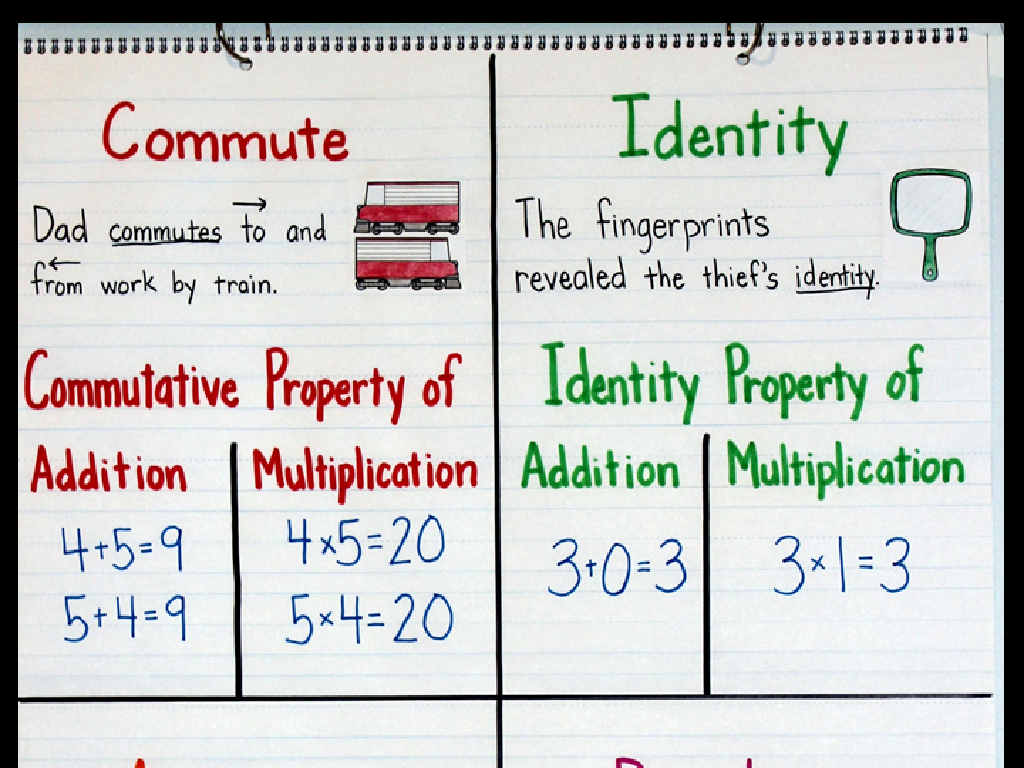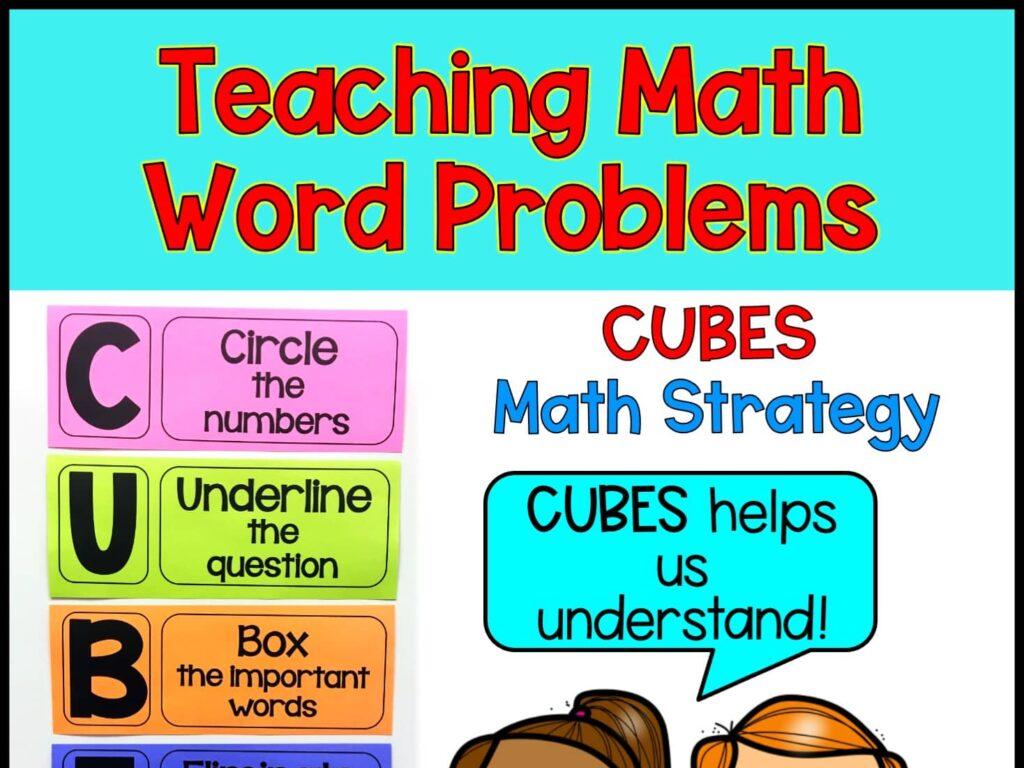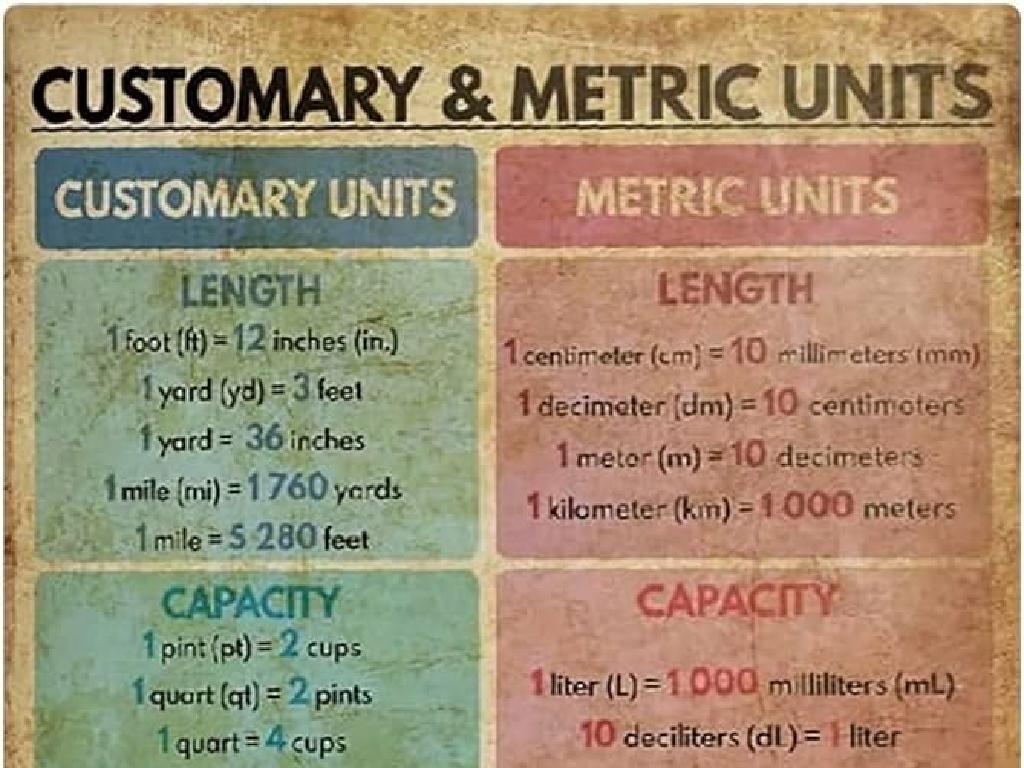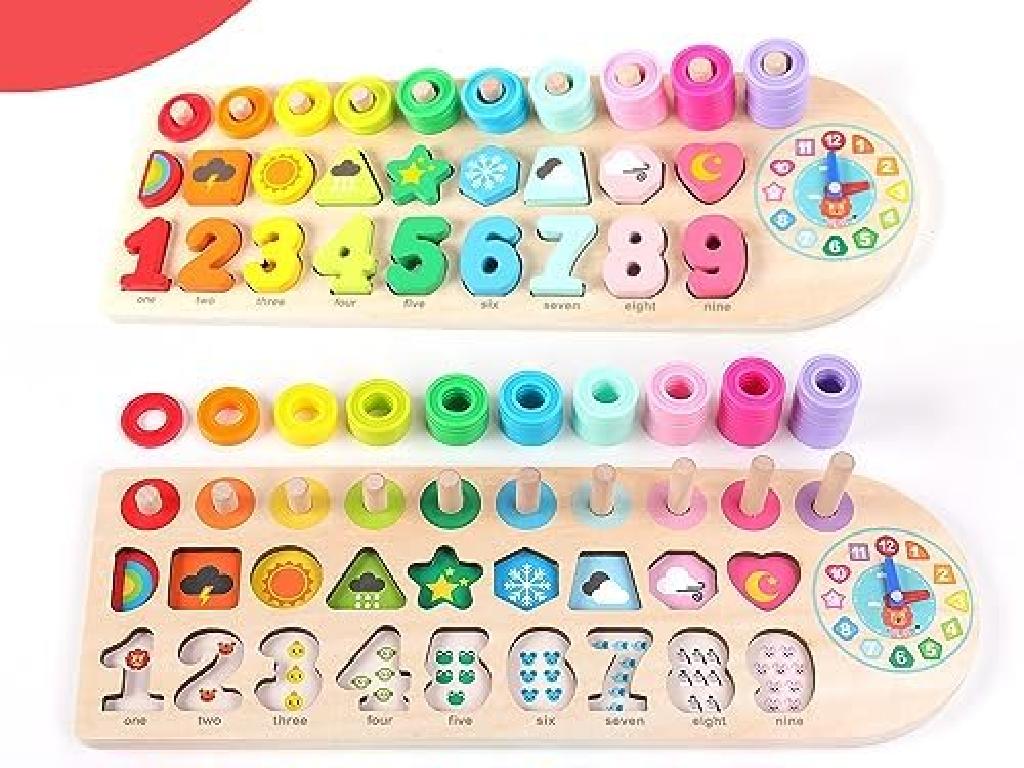Identify And Correct Errors With Plural And Possessive Nouns
Subject: Language arts
Grade: Fourth grade
Topic: Nouns
Please LOG IN to download the presentation. Access is available to registered users only.
View More Content
Today’s Adventure: Plural and Possessive Nouns!
– Discover what nouns are
– Learn about singular and plural nouns
– Singular nouns name one item, plural nouns name more than one.
– Explore possessive nouns
– Possessive nouns show ownership, like ‘dog’s leash’ or ‘kids’ playground’.
– Practice correcting noun errors
|
This slide introduces the concept of nouns and their different forms to the students. Begin by explaining that nouns are the names of people, places, things, or ideas. Then, differentiate between singular and plural nouns, emphasizing that plural nouns indicate more than one of something. Next, introduce possessive nouns, which show that something belongs to someone or something. Use examples to illustrate how adding an apostrophe and sometimes an ‘s’ can change the meaning of a word to show possession. Finally, prepare some sentences with common errors in plural and possessive forms for the students to correct as a class activity, reinforcing their understanding of the topic.
Singular and Plural Nouns
– What is a Singular Noun?
– A singular noun names one person, place, or thing.
– Making Singular Nouns Plural
– To make most nouns plural, add ‘s’ or ‘es’.
– Regular Plurals: Add ‘s’ or ‘es’
– For words ending in ‘s’, ‘x’, ‘z’, ‘ch’, ‘sh’, add ‘es’.
– Irregular Plurals: Special Changes
– Words like ‘child’ to ‘children’, ‘foot’ to ‘feet’.
|
This slide introduces the concept of singular and plural nouns. Begin by explaining that a singular noun represents one single item, whereas a plural noun represents more than one. Discuss the general rule for creating regular plurals by adding ‘s’ or ‘es’, and provide examples such as ‘cat’ to ‘cats’ and ‘bus’ to ‘buses’. Highlight the exceptions to the rule with irregular plurals, using examples like ‘mouse’ to ‘mice’ and ‘goose’ to ‘geese’. Encourage students to think of their own examples and to understand that while most plurals are formed by adding ‘s’ or ‘es’, some words require a change in the word itself. Provide a worksheet with a mix of regular and irregular nouns for students to practice turning singular nouns into plurals.
Practice Time: Plural Nouns
– Match singular to plural nouns
– Group activity: Plural forms
– Work together to find plurals
– Write plural forms of nouns
– Use rules for making nouns plural
– Share findings with the class
– Discuss as a class after activity
|
This slide is for a class activity focused on plural nouns. Students will start by matching singular nouns to their correct plural forms, reinforcing their understanding of how to convert singular nouns to plural. In groups, they will be given a list of singular nouns and will collaborate to write the plural forms, applying the rules they’ve learned about noun pluralization, such as adding ‘s’, ‘es’, or changing ‘y’ to ‘ies’. After completing the task, each group will share their answers with the class, allowing for discussion and correction of any errors. This activity will help solidify the concept of plural nouns through practice and peer learning.
Mastering Possessive Nouns
– What’s a possessive noun?
– It shows who or what owns something
– Apostrophes show ownership
– Use an apostrophe + ‘s’ for singular nouns
– Singular vs. plural possessives
– For plural nouns ending in ‘s’, just add an apostrophe
– Practice with examples
– ‘The cat’s toy’ (singular) and ‘The cats’ toy’ (plural)
|
This slide introduces possessive nouns, which indicate ownership or belonging. Explain that by adding an apostrophe and sometimes an ‘s’, we can show that something belongs to someone or something. Emphasize the difference in apostrophe placement between singular and plural nouns, and provide clear examples for both. For singular nouns not ending in ‘s’, we add ‘s (e.g., the dog’s bone). For plural nouns already ending in ‘s’, we only add an apostrophe (e.g., the dogs’ park). Encourage students to create their own examples and correct sentences with possessive noun errors. This will help them understand and apply the concept in their writing.
Correcting Plural and Possessive Noun Errors
– Common errors with plurals
– Adding ‘s’ when it’s not needed or forgetting it when it is
– Possessive noun mistakes
– Mixing up ‘s and s’ for possessives
– Tips to spot and fix errors
– Read sentences carefully, look for context clues
– Class practice on the board
– We’ll correct sentences together as a class activity
|
This slide is aimed at helping students identify and correct common mistakes made with plural and possessive nouns. Start by explaining that plural nouns indicate more than one of something and usually end with an ‘s’, but there are exceptions. Then, discuss possessive nouns, which show ownership and can end with ‘s or just an apostrophe for plural possessives. Provide examples of common errors and how to correct them. For the class activity, write incorrect sentences on the board and guide the students through the process of correcting them, reinforcing the rules for plurals and possessives. Encourage participation and praise correct answers to build confidence.
Let’s Play a Game: Noun Detective!
– Play ‘Noun Detective’ game
– Find errors in the story
– Look for nouns that don t fit the sentence
– Correct plural & possessive nouns
– Is it ‘dogs’ or ‘dog’s’? Make sure nouns are used correctly
– Work in pairs for the challenge
– Team up with a classmate to solve the noun puzzles
|
This interactive game encourages students to apply their knowledge of plural and possessive nouns in a fun and engaging way. ‘Noun Detective’ requires students to identify and correct mistakes in a provided story, focusing on the proper use of plural and possessive forms. Working in pairs, students will discuss and decide on the correct usage, promoting teamwork and collaborative learning. As a teacher, facilitate the activity by providing guidance and ensuring each pair has a story with pre-planned noun errors. Possible activities include correcting a story about a day at the zoo, a narrative about a family’s holiday, or a description of a sports game, each with intentional noun errors for students to find and fix.
Class Activity: Noun Creators
– Create sentences with plural nouns
– Create sentences with possessive nouns
– Share your sentences with the class
– Think about what makes your sentences unique and fun
– Vote on the best noun usage
– Consider creativity and correct use of nouns during voting
|
This activity is designed to engage students in practicing plural and possessive nouns in a fun and interactive way. Students will create their own sentences, focusing on the correct use of plural nouns (more than one item, e.g., ‘dogs’, ‘cats’) and possessive nouns (showing ownership, e.g., ‘dog’s bone’, ‘teacher’s book’). After crafting their sentences, they will share them with the class to showcase their understanding. The class will then vote on the sentences that demonstrate the most creativity and accuracy in using nouns. For the teacher: Prepare a simple rubric for voting that includes points for correct grammar and creativity. Offer examples to the class before they start, and provide assistance as needed during the activity. Have a small reward for the winners to encourage participation.
Review and Reflect: Plural and Possessive Nouns
– Recap on plural and possessive nouns
– Plurals add ‘s’ or ‘es’, possessives show ownership with an apostrophe
– Importance of correct usage
– Using them correctly helps us communicate clearly and avoid confusion
– Homework: Craft a short story
– Use your imagination to write a story with at least 10 plural or possessive nouns
– Incorporate 10 new plural and possessive nouns
– Show what you’ve learned by using each noun correctly in your story
|
Today’s lesson focused on understanding the difference between plural nouns, which indicate more than one, and possessive nouns, which show ownership. It’s crucial for students to use these correctly to convey the right meaning in their writing. For homework, students should write a short story that includes 10 new plural and possessive nouns to demonstrate their grasp of the concepts. Encourage creativity and remind them to proofread their work for correct noun usage. This exercise will help reinforce today’s lesson and prepare them for more advanced writing tasks.





